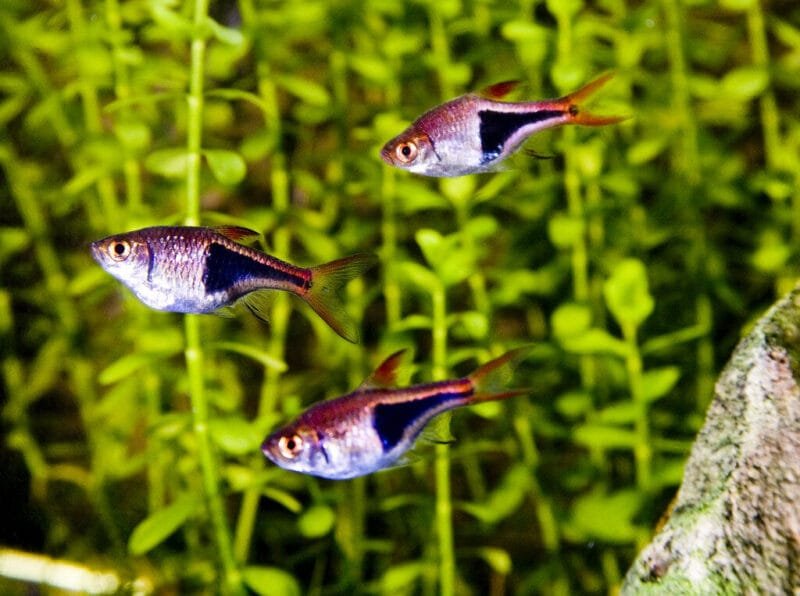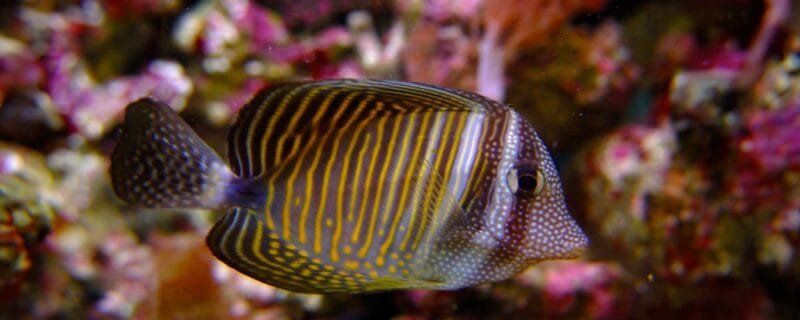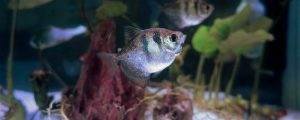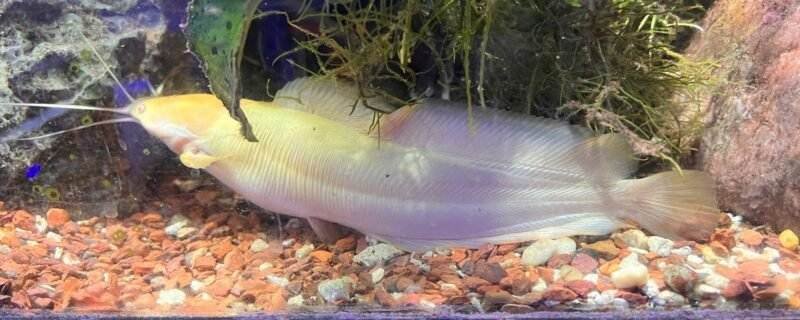Rasbora sarawakensis, commonly known as the Sarawak Rasbora, is a beautiful and lesser-known member of the Rasbora genus. Native to the lush tropical streams of Borneo, this species is prized for its vibrant copper-orange coloration, peaceful temperament, and schooling behavior. It makes a stunning addition to any well-maintained, planted freshwater aquarium.
Let’s explore everything you need to know to care for Rasbora sarawakensis, including size, diet, sexing, breeding, and tank compatibility, along with details on albino variants and potential species variations.
Common Name and Latin Name
Common Name: Sarawak Rasbora
Latin Name: Rasbora sarawakensis
This species is part of the Cyprinidae family, which includes carps, danios, and barbs. Rasboras in general are known for their peaceful schooling behavior and ease of care, making them popular among aquarists of all skill levels.
Native Habitat
Sarawak Rasboras are native to Borneo, specifically to the Malaysian state of Sarawak, from which their name is derived. They are typically found in slow-moving blackwater streams and peat swamp forests, rich with leaf litter, organic material, and dense vegetation. The waters are soft, acidic, and tinted with tannins, replicating a natural biotope perfect for their survival.
Size
Rasbora sarawakensis grows to an adult size of around 4.5 to 5 cm (approximately 2 inches), making it a small but visually impactful addition to a community aquarium. Their slim, torpedo-shaped bodies make them agile swimmers, and they prefer to move in synchronized schools.
Diet
These rasboras are omnivores and not fussy eaters. In the wild, they feed on tiny invertebrates, insect larvae, and plant matter.
In captivity, a balanced diet includes:
-
High-quality micro pellets or flake food
-
Live or frozen foods like daphnia, baby brine shrimp, or bloodworms
-
Vegetable-based flakes or spirulina to support coloration and health
Feeding small portions twice a day is ideal to avoid overfeeding and maintain excellent water quality.
Sexing
Sexing Rasbora sarawakensis can be subtle:
-
Females are generally rounder-bodied, especially when full of eggs.
-
Males tend to have slimmer bodies and more intense coloration, especially during breeding displays.
Group dynamics can also help highlight subtle differences in courtship and behavior.
Breeding
Breeding Rasbora sarawakensis in captivity is challenging but possible with the right setup.
Key Conditions:
-
Separate breeding tank with soft, acidic water (pH 5.5–6.5) and low light
-
Fine-leaved plants or spawning mops for egg scattering
-
Temperature around 26–28°C (78–82°F)
-
Use a ratio of 2 males to 1 female to trigger competition and spawning behavior
These rasboras are egg scatterers, meaning they release eggs randomly while swimming. They do not exhibit parental care and may eat their own eggs, so removing adults after spawning is necessary.
Fry hatch in 24–36 hours and should be fed infusoria or commercial liquid fry food, followed by baby brine shrimp as they grow.
Water Conditions
Ideal water parameters for Rasbora sarawakensis:
-
Temperature: 24–28°C (75–82°F)
-
pH: 5.5–7.0
-
Hardness: Very soft to moderately soft (1–8 dGH)
-
Tank size: Minimum 20 gallons for a group of 8–10 individuals
These rasboras thrive in blackwater conditions, which can be achieved using Indian almond leaves, driftwood, or peat filtration.
Ease of Care
Moderate. While not overly demanding, Rasbora sarawakensis does best in a well-established, stable aquarium with:
-
Gentle filtration
-
Dense planting
-
Dim lighting or floating plants to reduce stress
-
Clean, tannin-rich water
They are sensitive to poor water quality, so regular water changes (25–30% weekly) are essential.
Community Tank Compatibility
Sarawak Rasboras are peaceful, social, and thrive in groups. They should always be kept in schools of at least 8 individuals to promote natural behavior and reduce stress.
Compatible Tank Mates:
-
Small peaceful tetras (e.g., ember, glowlight)
-
Other rasboras (e.g., Harlequin Rasboras)
-
Otocinclus
-
Kuhli loaches
-
Peaceful dwarf gouramis
-
Shrimp (with caution, due to possible fry predation)
Avoid aggressive or significantly larger fish that may view them as food.
Species Variations and Albino Forms
Currently, Rasbora sarawakensis has no widely recognized subspecies, but coloration may vary depending on collection locality and stress levels.
Albino Variant:
An albino variation of Rasbora sarawakensis is rare but may exist through selective breeding. These fish would display:
-
Pale, translucent body coloration
-
Pink or red eyes
-
Reduced or absent body striping
-
Increased sensitivity to light
Care is similar, though albinos may require lower lighting or shaded areas to reduce stress and enhance visibility.
Related Species
Rasbora sarawakensis is closely related to other species in the Rasbora genus, including:
-
Rasbora einthovenii – Slender rasbora with a similar schooling nature
-
Rasbora hengeli – Often confused due to color similarities but smaller
-
Rasbora kalochroma – Larger and deeper-bodied blackwater rasbora
All Rasboras share similar care needs and thrive in peaceful, well-planted aquariums.
Frequently Asked Questions
Q1: How many Sarawak Rasboras should I keep together?
A minimum of 8–10 individuals is recommended to ensure healthy social behavior and reduce stress.
Q2: Can Sarawak Rasboras live in a planted tank?
Yes, they are ideal for planted aquariums, especially blackwater or softwater biotopes with leaf litter and floating plants.
Q3: Are they beginner-friendly?
While not as hardy as some rasboras, they are suitable for intermediate aquarists who can provide stable, soft water and a peaceful environment.
If you’re looking for a colorful, peaceful schooling fish to complement a blackwater or heavily planted tank, Rasbora sarawakensis is an outstanding choice. Their gentle nature, vibrant hues, and fascinating group dynamics make them a rewarding species for aquarists seeking something a bit more unique than the standard rasbora fare.
Let them glide through the tannin-rich waters of your aquarium and bring a little piece of Borneo’s magic into your home.





